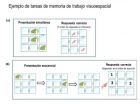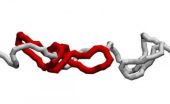(Press-News.org) This press release is available in German.
The study published in "Angewandte Chemie" might help to work out strategies for developing potential drugs. As the team of scientist including Markus Zweckstetter and Eckhard Mandelkow report, methylene blue inactivates molecular residues that promote the bonding of tau proteins.
Methylene blue is a multi-talented substance with a long history. The synthetic compound was first produced in 1876, and since then has served not only as a blue dye, but also as a medical drug – for example to treat malaria and prevent urinary tract infections. It is now also being debated as a potential treatment for Alzheimer's disease.
Methylene blue works in many ways. With regard to Alzheimer's, it is interesting to note that it prevents the clumping of "tau proteins". Such aggregates are typical in numerous forms of dementia: The protein clumps accumulate in the brain cells, disrupt their function, and can even kill them.
"Tau proteins are actually extremely important, because they stabilize the transport routes inside each nerve cell," explains Prof. Eckhard Mandelkow, who works at the German Center for Neurodegenerative Diseases (DZNE) and the caesar research center in Bonn. "However, in cases of Alzheimer's, they stop doing their job. The transport routes inside the cells break down, and supplies essential for the survival of the cells can no longer reach their destination. In addition, the tau proteins stick together. These aggregates are also harmful and are a typical characteristic of the disease."
Such characteristics can be reproduced in animal studies. Previously, another team of scientists led by Dr. Eva-Maria Mandelkow was able to prove that methylene blue is able to alleviate the symptoms of an illness in mice and threadworms. However, no significant data from human patients has been collected so far. Furthermore, to date it was unknown, why methylene blue had the observed effect. "Methylene blue inhibits the aggregation process," Eckhard Mandelkow emphasizes. "But the way in which this happens was unknown until now."
The study now published in "Angewandte Chemie" reveals the nature of this process: Markus Zweckstetter's research group at the DZNE site in Göttingen and the Max Planck Institute for Biophysical Chemistry in Göttingen in collaboration with the Mandelkow team have been able to prove that methylene blue deactivates molecular residues which promote the bonding of tau proteins. Moreover, the researchers found indications that the substance acts as a spacer to keep the proteins apart. These findings could lead to the development of modified forms of methylene blue and new types of treatment.
Background:
Methylene blue tackles sulphur groups
NMR spectroscopy, a powerful technique for investigating biomolecules, was centrally important to the current study. "We found that methylene blue reacts with certain elements in the tau proteins called cysteines," Prof. Zweckstetter summarizes.
This reaction is highly effective. Methylene blue specifically modifies the tau proteins at critical spots: Of the up to 441 elements which a tau protein can consist of particularly the two cysteines are modified. The elements directly modified are the so-called SH groups, molecular appendages comprising sulphur and hydrogen which are typical of cysteines. Oxygen atoms now couple with them.
"This chemical transformation prevents tau proteins from bonding together," says Zweckstetter. "Otherwise SH groups from different proteins would react and form a so-called disulfide bridge. Now, this is no longer possible, because the reaction with methylene blue eliminates the SH groups."
In a healthy organism, the formation of these disulfide bridges is suppressed naturally. "The cell tries to prevent harmful reactions with the help of antioxidants," says Eckhard Mandelkow. "However, with age and in cases of neurodegenerative diseases such as Alzheimer's, this protective system weakens allowing tau proteins to aggregate."
Beta sheets also important
Zweckstetter stresses that along with the disulfide bridges, another mechanism is important for the clumping of tau proteins. "Tau proteins aggregate particularly quickly when disulfide bonds form. These work like a trigger. However, tau proteins can also aggregate without these bridges, albeit more slowly."
This is due to the structure of the molecule, the backbone of which can fold like an accordion in some places. Such regions can pile up to "beta sheets" when two proteins come together closely enough and in the appropriate orientation. "Our experiments also show a distinct effect of methylene blue on the regions that want to form these beta sheets." Thus, methylene blue, particularly its derivatives "Azure A" and "Azure B", which are expected to be predominantly present in the body, also appear to inhibit the aggregation of beta sheets. "Steric hindrance occurs," Zweckstetter guesses. "When an inhibitor attaches to a beta sheet region of the tau protein, no other tau molecule can lock on."
There are other substances besides methylene blue that can suppress the aggregation of tau proteins. Some of them focus explicitly on preventing the build-up of beta sheets. The researchers believe that an effective treatment could ultimately require a combination of various substances: "Certainly, one conclusion of our study is that there are different ways to disrupt the pathogenic aggregation of tau proteins."
###
Original Publication
„Mechanistic Basis of Phenothiazine-driven Inhibition of Tau Aggregation", Elias Akoury, Marcus Pickhardt, Michal Gajda, Jacek Biernat, Eckhard Mandelkow, Markus Zweckstetter, Angewandte Chemie, DOI: 10.1002/anie.201208290
http://onlinelibrary.wiley.com/doi/10.1002/anie.201208290/abstract
Researchers decipher modus operandi of potential Alzheimer's drug
Chemical reaction with methylene blue modifies tau proteins
2013-02-20
ELSE PRESS RELEASES FROM THIS DATE:
Bilingual children have a better 'working memory' than monolingual children
2013-02-20
A study conducted at the University of Granada and the University of York in Toronto, Canada, has revealed that bilingual children develop a better working memory –which holds, processes and updates information over short periods of time– than monolingual children. The working memory plays a major role in the execution of a wide range of activities, such as mental calculation (since we have to remember numbers and operate with them) or reading comprehension (given that it requires associating the successive concepts in a text).
The objective of this study –which was published ...
Healthy rivalry could boost sport and business performance
2013-02-20
New research shows that people can recover from poor performance when rivals comment on their failures. The research, to be published in the Journal of Experimental Social Psychology, shows that while criticism from team members sends individuals into downward performance spirals, external criticism can be a trigger that boosts performance as people try to prove the outsiders wrong. The research carried out by the University of Exeter, Amherst College and the University of Stirling offers a method of improving performance following setbacks and can be applied both in the ...
New taxonomy of platinum nanoclusters
2013-02-20
Physicists have gained new insights into the inner intricacies of the structural variations of metallic nanoclusters. This work by Luca Pavan, Cono Di Paola and Francesca Baletto from King's College London, UK, is about to be published in EPJ D. It takes us one step closer to tailoring on-demand characteristics of metallic nanoparticles. Indeed, the geometric structure of these nanoclusters influences their chemical and physical properties, which differ from those of individual molecules and of bulk metals.
The problem resides in the difficulty in evaluating the optimal ...
Molecular basis identified for tissue specific immune regulation in the eye and kidney
2013-02-20
Both AMD, which affects around 50 million people worldwide, and aHUS, a rare kidney disease that affects children, are associated with incorrectly controlled immune systems. A protein called complement factor H (CFH) is responsible for regulating part of our immune system called the complement cascade. Genetic alterations in CFH have been shown to increase a person's risk of developing either AMD or aHUS, but rarely both. Why this is the case has never been explained until now.
Researchers from the Wellcome Trust Centre for Cell Matrix Research and the Ophthalmology and ...
The nano-channel that disentangles knots
2013-02-20
The DNA, just like hair, has a tendency to become knotted, thus it may be useful to disentangle it.
Unfortunately, it is not possible to "actively" choose at random (or better, in one solution) the filaments with the desired features, and this is why scientists adopt "passive" solutions like, for instance, having the DNA pass through nano-pores or nano-channels.
"Channels and filaments have physical features we may exploit to selectively let a type of molecule pass through" explains Micheletti. "You can have more or less entangled filaments and featuring knots of different ...
New technology in the magnetic cooling of chips
2013-02-20
Luis Hueso, the CICnanoGUNE researcher, together with researchers from the University of Cambridge, among others, has developed a new technology in the magnetic cooling of chips based on the straining of materials. Compared with the current technologies, this advance enables the impact on the environment to be lessened. The work has been published recently in the prestigious journal Nature Materials.
Current cooling systems, be they refrigerators, freezers or air conditioning units, make use of the compression and expansion of a gas. When the gas is compressed, it changes ...
A self-healing protective coating for concrete
2013-02-20
Scientists are reporting development of what they describe as the first self-healing protective coating for cracks in concrete, the world's most widely used building material. Their study on the material — which is inexpensive and environmentally friendly — appears in the journal ACS Applied Materials & Interfaces.
Chan-Moon Chung and colleagues explain that protecting concrete roads, bridges and other structures from developing tiny cracks has been a major technological challenge. Cracks allow water, salt used for deicing and air to enter the concrete. During winter ...
New IOM report highlights PEPFAR's successes
2013-02-20
WASHINGTON -- The President's Emergency Plan for AIDS Relief (PEPFAR) has saved and improved millions of lives worldwide and offered proof that HIV/AIDS services can be effectively delivered on a large scale even in countries with high rates of disease and resource constraints, says a new congressionally mandated evaluation conducted by the Institute of Medicine.
Moving forward, PEPFAR needs to intensify efforts to help its partner countries develop the capacity to manage their own programs, sustain the gains that have been made in controlling the HIV epidemic, and improve ...
New imaging device that is flexible, flat, and transparent
2013-02-20
WASHINGTON, Feb. 20, 2013— Digital cameras, medical scanners, and other imaging technologies have advanced considerably during the past decade. Continuing this pace of innovation, an Austrian research team has developed an entirely new way of capturing images based on a flat, flexible, transparent, and potentially disposable polymer sheet. The team describes their new device and its possible applications in a paper published today in the Optical Society's (OSA) open-access journal Optics Express.
The new imager, which resembles a flexible plastic film, uses fluorescent ...
Can insurers save money by providing free diabetes-related medications and supplies?
2013-02-20
New Rochelle, NY, February 20, 2013–Reducing financial barriers to medication access—a strategy known as value-based insurance design (VBID)—can improve medication adherence and management of chronic diseases such as diabetes. The economic and patient-perceived benefits of eliminating co-payments for diabetes-related medications and supplies are described in a trend-setting study published in Population Health Management, a peer-reviewed journal from Mary Ann Liebert, Inc., publishers. The article is available free on the Population Health Management website at http://www.liebertpub.com/pop.
In ...
LAST 30 PRESS RELEASES:
Why nail-biting, procrastination and other self-sabotaging behaviors are rooted in survival instincts
Regional variations in mechanical properties of porcine leptomeninges
Artificial empathy in therapy and healthcare: advancements in interpersonal interaction technologies
Why some brains switch gears more efficiently than others
UVA’s Jundong Li wins ICDM’S 2025 Tao Li Award for data mining, machine learning
UVA’s low-power, high-performance computer power player Mircea Stan earns National Academy of Inventors fellowship
Not playing by the rules: USU researcher explores filamentous algae dynamics in rivers
Do our body clocks influence our risk of dementia?
Anthropologists offer new evidence of bipedalism in long-debated fossil discovery
Safer receipt paper from wood
Dosage-sensitive genes suggest no whole-genome duplications in ancestral angiosperm
First ancient human herpesvirus genomes document their deep history with humans
Why Some Bacteria Survive Antibiotics and How to Stop Them - New study reveals that bacteria can survive antibiotic treatment through two fundamentally different “shutdown modes”
UCLA study links scar healing to dangerous placenta condition
CHANGE-seq-BE finds off-target changes in the genome from base editors
The Journal of Nuclear Medicine Ahead-of-Print Tip Sheet: January 2, 2026
Delayed or absent first dose of measles, mumps, and rubella vaccination
Trends in US preterm birth rates by household income and race and ethnicity
Study identifies potential biomarker linked to progression and brain inflammation in multiple sclerosis
Many mothers in Norway do not show up for postnatal check-ups
Researchers want to find out why quick clay is so unstable
Superradiant spins show teamwork at the quantum scale
Cleveland Clinic Research links tumor bacteria to immunotherapy resistance in head and neck cancer
First Editorial of 2026: Resisting AI slop
Joint ground- and space-based observations reveal Saturn-mass rogue planet
Inheritable genetic variant offers protection against blood cancer risk and progression
Pigs settled Pacific islands alongside early human voyagers
A Coral reef’s daily pulse reshapes microbes in surrounding waters
EAST Tokamak experiments exceed plasma density limit, offering new approach to fusion ignition
Groundbreaking discovery reveals Africa’s oldest cremation pyre and complex ritual practices
[Press-News.org] Researchers decipher modus operandi of potential Alzheimer's drugChemical reaction with methylene blue modifies tau proteins




